

For this assignment I have chosen to investigate graphing the equation r=a + b*cos(k*theta) for various cases of a, b, and k. The main investigations I will be undertaking are when a = b, a < b, and a > b. In addition we will be attempting to discover how different values of a, b, and k change the look of the graph.
Let's begin by investigating the case where a = b = 1 for values of k = 1, 2, 3, and 4:
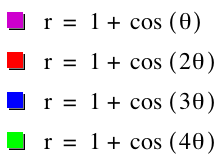
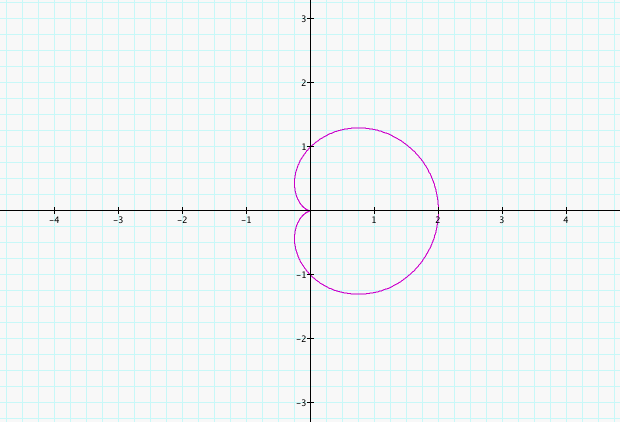
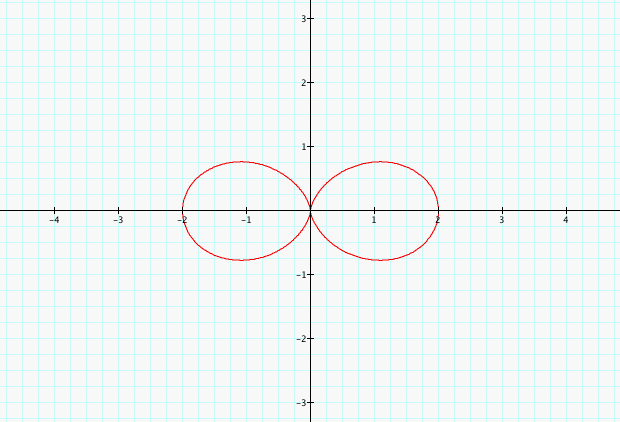
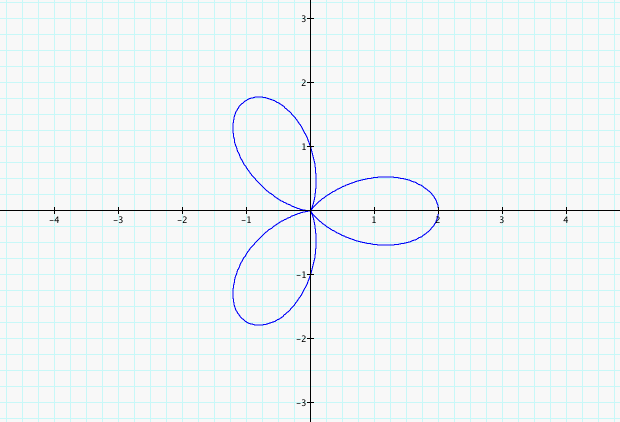
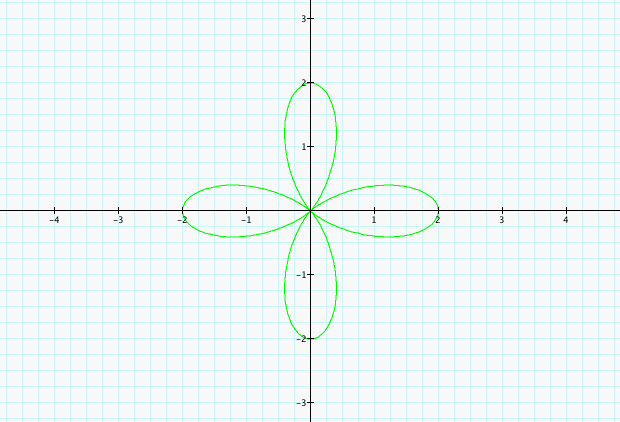
What we can observere in this case is that for each value of k, we see an equal number of "loops" on the graph. In addition, it appears that the vertex of each loop falls equally spaced at every 360/k degrees of rotation from 0. (i.e. for k=3, we observe 3 loops spaced 120 degrees apart from each other). We can see that the loops are started at the 0 degree mark on the axis because every case has 1 loop on with it's vertex on the positive x axis, which is denoted as 0 degrees of rotation.
Now let's continue by investigating the case where a > b (a = 2, b = 1) for values of k = 1, 2, 3, and 4:
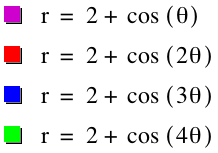
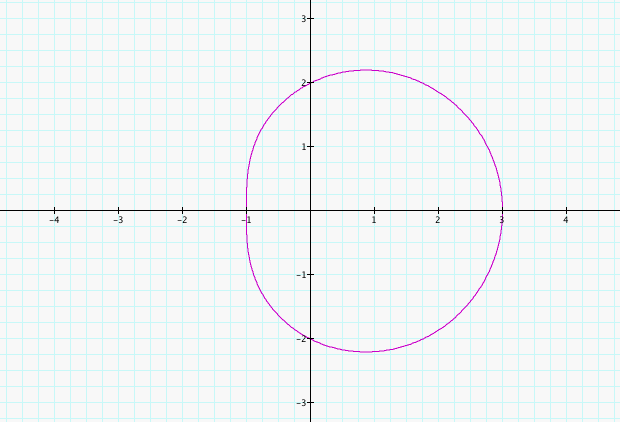
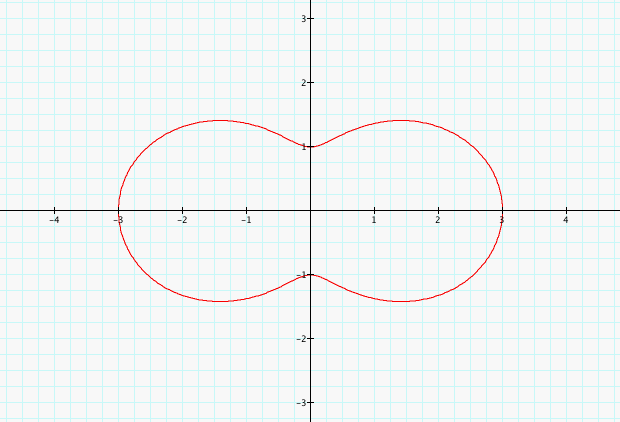
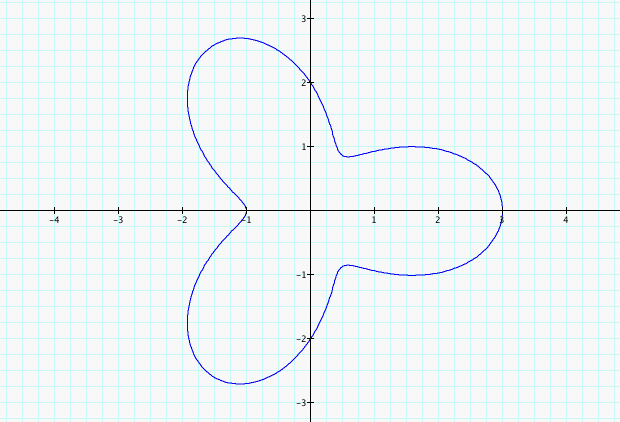
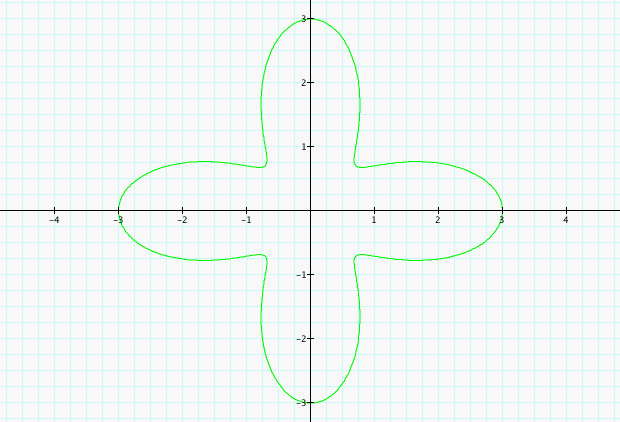
It appears that when a > b, the loops are no longer closed, but instead begin to open outwards creating a less distinct shape, and more of what people may call "a blob". While the overall shape of the graphs are the same, the begin to become less recognizable. Let's see if increasing the difference between a and b will increase this effect:
So let's investigate the case where a > b (a = 10, b = 1) for values of k = 1, 2, 3, and 4:
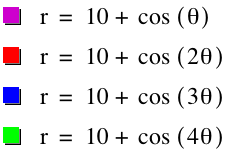

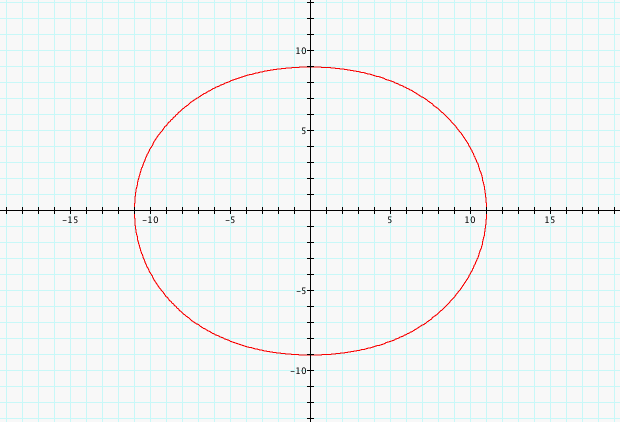
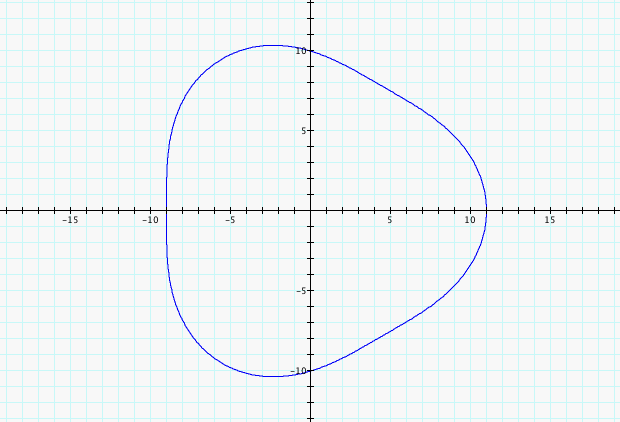
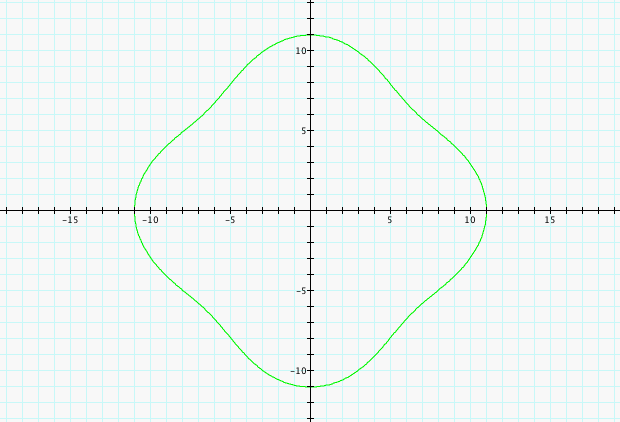
As predicted, the graphs look even more "blob-like" than in the previous case. However, it appears that the graphs are actually approaching the shape of a circle, as seen when k=0. It is then reasonable to conjecture that as the value of a --> inf, each graph will take the shape of a circle.
Lastly let's investigate the case where a < b (a = 1, b = 2) for values of k = 1, 2, 3, and 4:
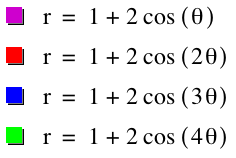
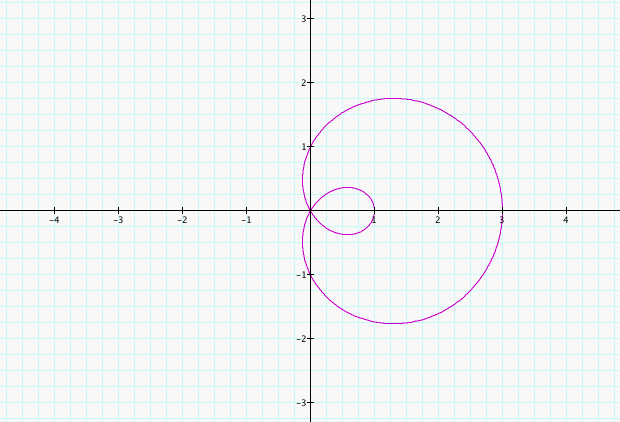
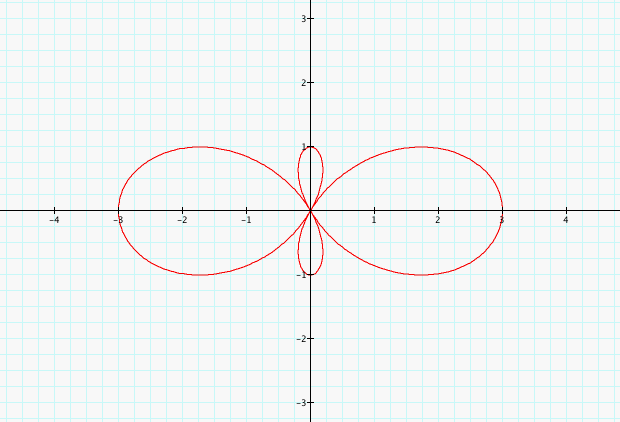
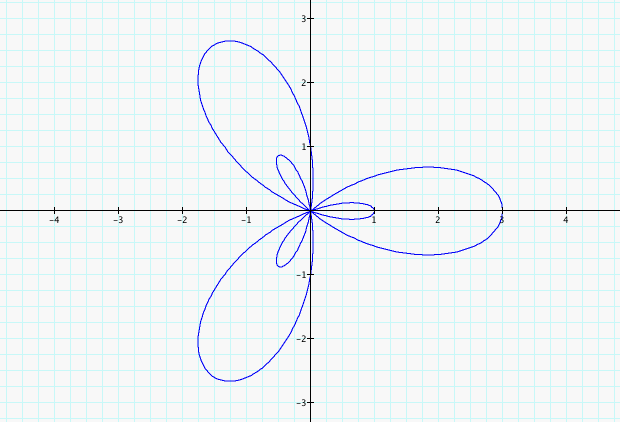
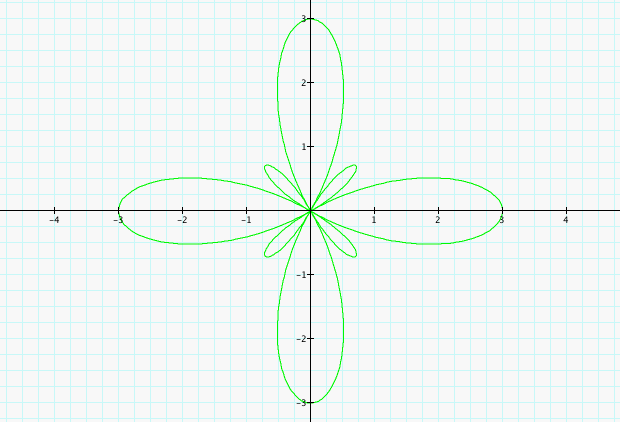
We can see that some "extra" loops have been added to these graphs when compared to the a = b case. In fact, we can see that there are twice as many loops in this case. If we were to increase the value of b, we would see that no additional loops would be generated, but instead the size of these "extra" loops would just increase. Additionally, we can see that in this case, the "extra" loops are formed outside of the original loops when k is even, but are formed inside of the original loops when k is odd.